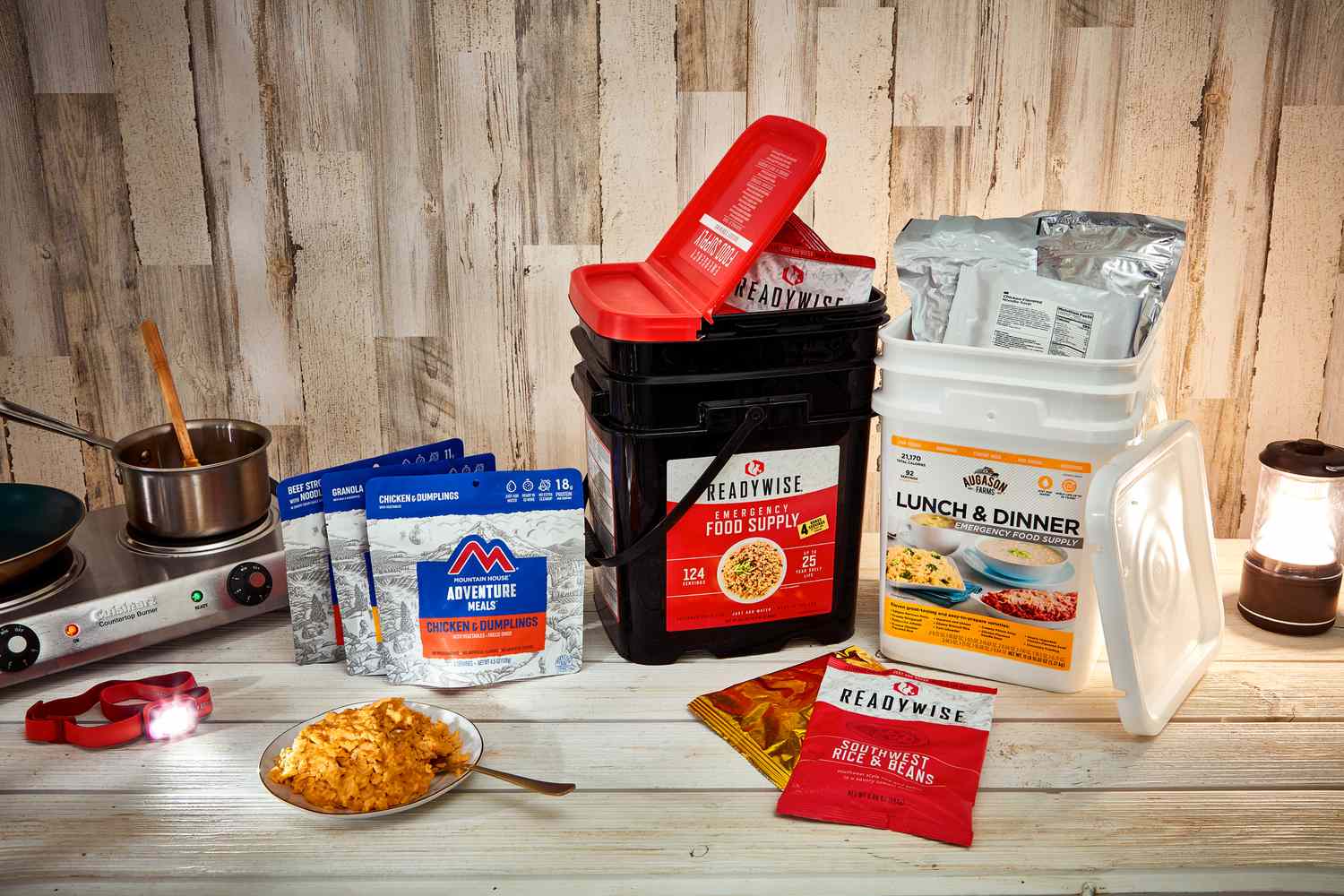Complete Emergency Food Guide
Having enough food for 3 days to be prepared for the unexpected.
In the vast tapestry of life, the unexpected threads of emergencies and disasters are woven alongside moments of joy and routine. While we can’t predict the future, we can certainly prepare for it, and one crucial aspect of preparedness is having a well-thought-out supply of emergency food. Welcome to the comprehensive guide to emergency food—a journey through sustenance planning for the unpredictable moments life may throw our way.
Please note that this content is reader supported. If you use these links to buy a go bag, we may earn a commission. Thanks.
The Need for Nourishment in Crisis
Imagine the sudden interruption of daily life—a natural disaster, power outage, or unexpected situation that disrupts the usual food supply. These moments highlight the significance of having a backup plan, a stash of sustenance that ensures you and your loved ones won’t go hungry amidst chaos.
Emergency food isn’t just about surviving; it’s about maintaining physical and mental well-being during trying times. Proper nutrition can provide comfort, stability, and the energy needed to make sound decisions and navigate challenges effectively.
Building Your Emergency Food Arsenal
Creating an emergency food supply begins with a blend of foresight and practicality. It’s about striking a balance between foods that are nutritious, long-lasting, and easy to prepare. Here’s a step-by-step guide to help you build your emergency food arsenal:
1. Assess Your Needs: Begin by evaluating the number of people in your household and their dietary preferences or restrictions. Take into account any special considerations, such as allergies or medical conditions.
2. Set a Duration: Determine how long you want your emergency food supply to sustain you. Common recommendations range from a 72-hour kit to a three-month supply. Your choice depends on your personal circumstances and comfort level.
3. Choose Nutrient-Rich Foods: Opt for foods that provide essential nutrients, including proteins, carbohydrates, healthy fats, vitamins, and minerals. Look for items with a good balance of macronutrients and micronutrients.
4. Focus on Shelf Life: Select foods with extended shelf lives to ensure they remain edible over time. Canned goods, freeze-dried foods, dehydrated foods, and vacuum-sealed items are popular choices.
5. Rotation and Storage: Regularly rotate your emergency food stock to prevent items from expiring. Store food in a cool, dry, and dark location to extend its shelf life. A dedicated pantry or storage space is ideal.
6. Include Comfort Foods: While practicality is essential, don’t underestimate the value of comfort foods. Items that bring a sense of familiarity and positivity can have a profound impact on morale during difficult times.
Types of Emergency Food
The landscape of emergency food options is as diverse as the situations it aims to address. From ready-to-eat meals to long-lasting staples, here are some common types of emergency food:
1. Ready-to-Eat Meals: These are pre-packaged meals that require no cooking or preparation. They’re a quick and convenient option for situations where resources are limited.
2. Freeze-Dried Foods: Freeze-drying removes moisture from food, preserving its nutritional value and flavor. These lightweight foods can be rehydrated with water for consumption.
3. Dehydrated Foods: Dehydrated foods have most of their moisture removed, significantly extending their shelf life. They often require soaking or cooking before eating.
4. Canned Goods: Canned foods are durable and familiar options. Choose a variety of canned vegetables, fruits, proteins, and soups for a well-rounded supply.
5. Grains and Legumes: Items like rice, pasta, beans, and lentils are pantry staples with long shelf lives. They provide essential carbohydrates and proteins.
6. Nut Butters: Peanut butter and other nut butters are dense sources of protein and healthy fats. They’re also calorie-dense and can offer sustained energy.
7. Snack Bars and Trail Mix: Portable snacks like energy bars and trail mix are great for on-the-go sustenance. Look for options with a good balance of nutrients.
Considerations for Special Diets
When planning your emergency food supply, it’s essential to accommodate any special dietary needs. Here are a few considerations for specific diets:
1. Vegetarian or Vegan: Opt for plant-based proteins like beans, lentils, nuts, and seeds. Include canned or dehydrated vegetables and fruits for vitamins and minerals.
2. Gluten-Free: Choose gluten-free grains like rice, quinoa, and oats. Ensure any packaged foods you select are certified gluten-free.
3. Allergies: Avoid foods that trigger allergies. Read labels carefully and opt for allergen-free options when necessary.
4. Medical Conditions: If you have specific medical conditions, consult your healthcare provider to ensure your emergency food supply aligns with your dietary needs.
Rotation and Maintenance
Building an emergency food supply isn’t a one-time endeavor—it requires regular maintenance and rotation. Follow these tips to ensure your supply remains effective:
1. First-In, First-Out (FIFO): When restocking, place new items behind older ones. This practice ensures that older items are used first, minimizing the risk of spoilage.
2. Check Expiry Dates: Regularly inspect your stock for items approaching their expiry dates. Consume or replace these items as needed.
3. Menu Rotation: Plan occasional meals using your emergency food supply. This practice allows you to become familiar with the foods and cooking methods, ensuring readiness in times of crisis.
Balancing Preparedness and Realism
While it’s important to have an emergency food supply, it’s equally vital to maintain a balanced perspective. Your emergency food is a safety net, not a lifestyle. Striking a balance between preparedness and everyday living ensures that you’re ready for unforeseen events while continuing to enjoy the present.
Involve your family in discussions about emergency preparedness. Education and awareness can alleviate anxiety and create a sense of unity in times of uncertainty.
The Peace of Preparedness Through the Emergency Food Guide
As you navigate the intricacies of emergency food planning, remember that preparedness is an investment in peace of mind. While we can’t predict the future, we can control our level of readiness. Creating a well-thought-out emergency food supply empowers you to face unforeseen challenges with resilience, strength, and the comfort of knowing that sustenance is one less worry on your path to security.
Ready to make your emergency go bag?
Stay one step ahead of a disaster later by taking steps to prepare now.

